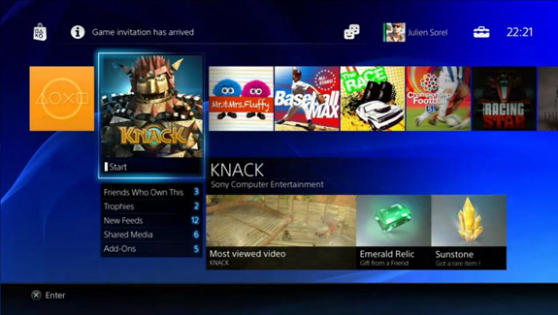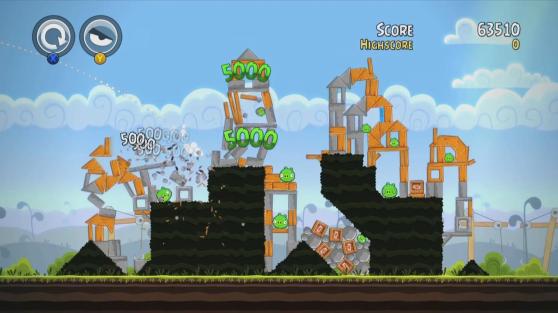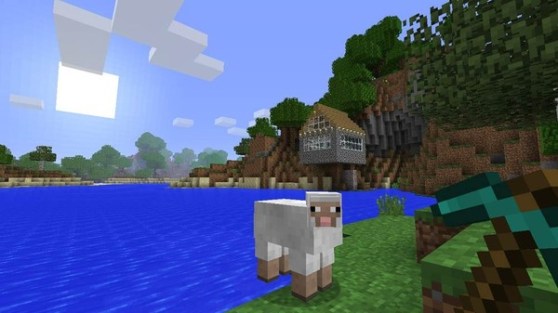This post has not been edited by the GamesBeat staff. Opinions by GamesBeat community writers do not necessarily reflect those of the staff.
Last time I posted about the upcoming console generation, I made a big deal about how social features might define it for consumers. I still stand by that, but I also think console gaming is hitting an important impasse regarding developer relations.
We’ve had guys like Cliff Bleszinski and the president of Sony Computer Entertainment talking a bit about it — how platform holders need to be more flexible with developers. I think this could turn out to be one of the biggest changes going into the next generation. Really, it’s been one of the most important aspects of console gaming throughout its entire history.
In an interview with Eurogamer, SCE head Shuhei Yoshida noted that Sony will allow indie studios to self-publish games on the PlayStation 4. SCE America head Jack Tretton also mentioned that they’ll allow companies to set PS4 games at various price points, ranging from 99 cents (and likely free to play) to $60.
Trine 2 creator Frozenbyte noted awhile ago how it was able to self-publish the Wii U eShop version of the game as opposed to going through an outside publisher for Xbox Live Arcade and PlayStation Network. I think that’s a pretty big deal. It’s also probably one of the biggest differences between the console digital-distribution services and other stores like Steam, iOS, and Google Play. Finding a full publisher is one of the biggest barriers for indies and probably the reason why a lot of PC and mobile indie games don’t come to consoles.
Price variation is a big issue, too. The console game market during the current generation was almost cleanly bifurcated between $60 retail games — too many of which struggled to sell — and $15 small indie games. If you look at, say, the PC during the same period, you see a lot of games in a nice place in between. You see $20 games like Amnesia and Strike Suit Zero that you don’t see on consoles at all. There are also cases of $1 iOS games like Angry Birds, which for some reason had to be priced much higher on consoles.
I think Blezinski put it pretty well at the 2013 East Coast Game Conference: “Right now, he suggested the console market is 80 percent $60 retail titles and 20 percent cheaper downloadable offerings, but it needs to embrace virtually all genres and all price points,” Gamesindustry.biz reported. “That means $20 horror games, $40 shooters, $60 triple-A blockbusters, free-to-play, and everything in between, all easy to find for the audience who would be most interested in them.”
A third important element of publisher-developer relations that’s now changing is platform-holder policies on patching. A lot of developers have complained about all the bureaucracy involved in patching console games. “When Gears of War 2 launched and we found out that our netcode wasn’t working right, it took us three months to get an update out,” Bleszinski said. “By that time, the majority of users had moved on to the next game or had traded it in.”
In contrast, Steam and Apple have put the onus entirely on the developer to QA each patch, and they let developers release those patches without charge. I think the difference shows in how often software gets patched on Steam or iOS as opposed to Xbox 360 and PlayStation 3.
The developers of Dungeon Defenders basically gave up on updating the console versions, but my Steam copy of the game seems to be receiving a patch all the time. The number of content updates Valve has released for Team Fortress 2 on PC is in the triple digits; it’s hardly even the same game it was in 2007, but the company gave up on the Xbox version after running into Microsoft’s policy on how many free updates a developer gets. That same policy has forced Valve to charge for Left 4 Dead downloadable content on Xbox 360 while offering it for free on PC. There’s also the infamous case of how Polygon declined to patch Fez on Xbox 360 because of the costs Microsoft imposed.
In contrast, developers have already confirmed that Nintendo lets Wii U developers patch for free and as often as they want. Sony and Microsoft definitely need to follow suit.
A Wired article puts all these factors together pretty well in what it and The Penny Arcade Report call “The Minecraft Test.” Basically, it asks if a phenomenon like Minecraft could have occurred on a particular game platform. Minecraft happened because Mojang was able to “release” the game in a proto state, switch up its pricing model as the company pleased, and update it whenever it wanted without having to go through approval processes. I don’t think a console will ever be as completely open as the PC (unless Ouya really takes off), but the current ones are probably still a little bit too closed.
And that’s really the whole point: If consoles really want to fight off mobile gaming, tablet gaming, and the resurgent PC, they need to be more flexible with developers. More flexibility will probably get a platform more software, and more software increases the value of the hardware.
That’s how it’s been since basically forever. Sony overtook Nintendo with the original PlayStation by offering third-party publishers a friendly alternative to Nintendo’s then-draconian certification policies.
On the other hand, platform holders should remember the reasons why they have content curators in the first place. Nintendo’s draconian policies resurrected console games after the 1983 crash, when too many crappy games flooded the market. IOS is the perfect modern example of too little management, with good games struggling to stand out in a sea of shovelware along with a price ceiling so low as to prohibit full games.
A relations system built around big third-party publishers has worked up until the current generation. With the resurgence of garage development, though — with which mobile and PC have gotten along well and quickly — consoles are going to have to find a new balance to accommodate them properly.




